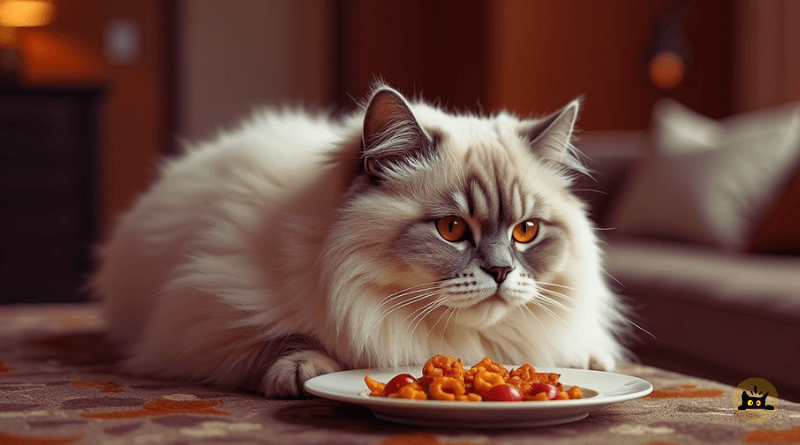Cat Obesity Prevention is essential for ensuring your cat lives a long, healthy, and happy life. Obesity is a growing concern for many cat owners. When cats eat more than they use, they can gain extra weight quickly. Preventing obesity isn’t just about keeping your kitty slim—it’s about creating a balanced lifestyle that combines proper nutrition, regular play, and routine care. In this post, we will explain why preventing obesity in cats is so important and share simple, everyday tips to help you maintain your cat’s healthy weight.
Understanding Cat Obesity Prevention
Obesity happens when a cat constantly takes in more calories than it burns. Over time, extra calories are stored as body fat. Factors such as overfeeding, frequent high-calorie treats, and not enough active play all contribute to weight gain. Even the environment matters—a home where your cat doesn’t move around much may encourage a more sedentary lifestyle. When extra weight accumulates, your cat becomes at risk for health issues like diabetes, joint pain, and heart problems. Recognizing simple signs—such as reduced activity or changes in the way your cat moves—can help you adjust its diet and daily routine before serious problems develop.
Reasons Behind Weight Gain in Cats
There are several reasons why your cat may gain extra pounds: • Overfeeding: When meals are not measured, your cat might end up consuming more than necessary. Even premium cat food can add up if portions are too large. • Constant Treats: Regularly offering high-calorie treats or table scraps can quickly lead to consuming too many calories. • Lack of Play: Cats that are not encouraged to have daily playtime may miss out on needed physical activity. • Age and Health Factors: As cats grow older, they tend to slow down. Some health issues also make it harder to burn energy, so extra caution is needed.
Simple Steps to Prevent Obesity
The key to a healthy cat is balancing food, play, and care. Here are some straightforward tips to help you prevent obesity in your cat:
Measure Your Cat’s Food Instead of leaving food available all day, use a measuring cup to serve a set amount at each meal. This controlled feeding helps ensure your cat receives just the right number of calories.
Stick to Set Meal Times Establish regular meal times and avoid free-feeding. A fixed schedule helps you control your cat’s calorie intake and makes it easier to monitor its eating habits.
Choose Low-Calorie Treats Treats are a lovely way to reward your cat, but opt for low-calorie options or limit them altogether. Rather than offering treats throughout the day, give them sparingly—healthy snacks like a bit of plain cooked chicken or specially formulated low-calorie treats work best.
Encourage Daily Play Physical activity is vital. Even if your cat seems content to nap, interactive play sessions help burn off extra calories. Use engaging toys, laser pointers, or feather wands to encourage movement. Aim for at least 15–20 minutes of play each day.
Create an Engaging Environment Set up your home to promote activity. Adding items such as climbing trees, window perches, or interactive features can motivate your cat to move and explore its surroundings.
Monitor Your Cat’s Weight Keep track of your cat’s body shape and activity level by observing small changes. Regular weigh-ins or even routine vet visits can catch early signs of weight gain, ensuring timely intervention.
Consult Your Vet Before making any major adjustments, talk to your veterinarian about your cat’s diet and exercise routine. Your vet can offer personalized advice based on your cat’s age, weight, and health and may recommend a specific plan to maintain a healthy weight.
What to Do: Practical Tips for a Healthy Cat
• Set measured meals using a measuring cup to control the amount of food. • Stick to a fixed meal schedule to avoid unnecessary feeding. • Limit treats by choosing healthier, low-calorie options served in small portions. • Dedicate time for daily play using interactive toys to boost activity. • Monitor your cat’s weight regularly and arrange routine vet check-ups for guidance.
By following these simple steps, you can prevent obesity in your cat and promote a vibrant, energetic life. Small daily adjustments—like serving measured meals and scheduling playtime—can make a significant difference in your cat’s overall health.
Final Thoughts
Preventing obesity in cats goes beyond reducing food intake; it’s about fostering an overall balanced lifestyle. With proper meal planning, regular play, and routine check-ups, you protect your cat from the harmful effects of extra weight. These small yet consistent changes in your daily routine can lead to a happier, healthier pet who remains active and joyful for years to come.
Sources : International Cat Care, Humane Society Veterinary Medical Association, Blue Cross for Pets

